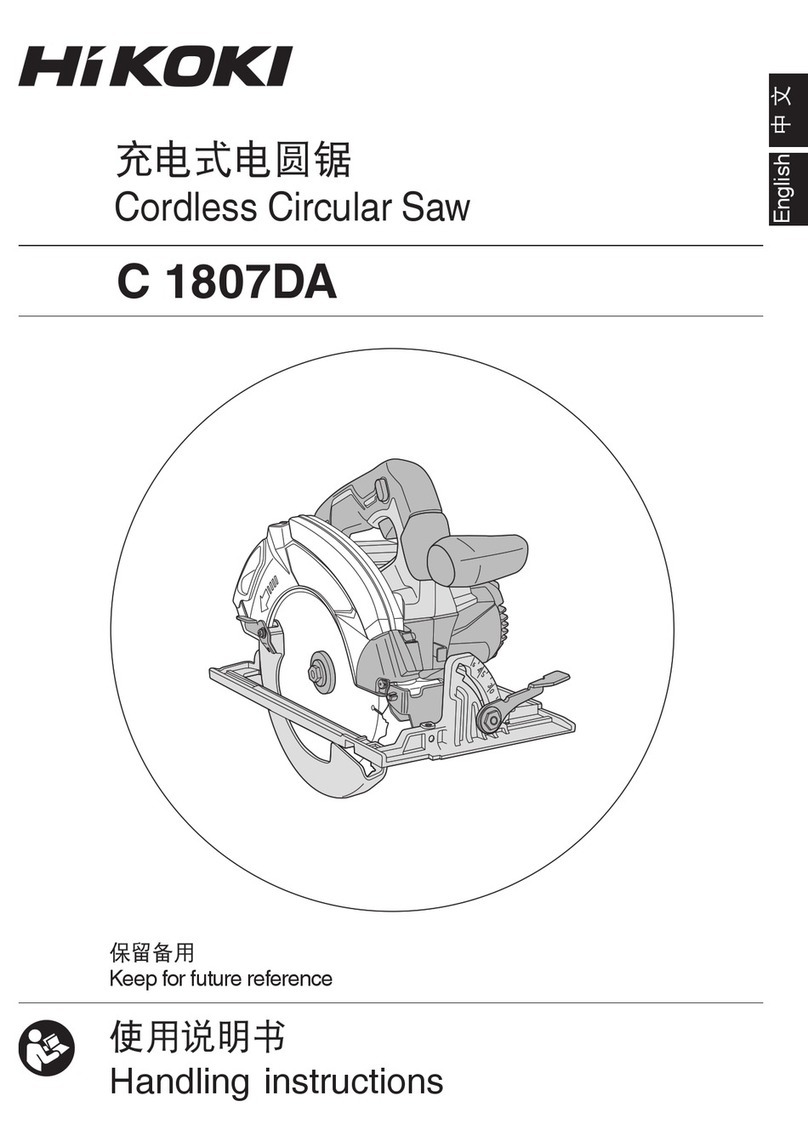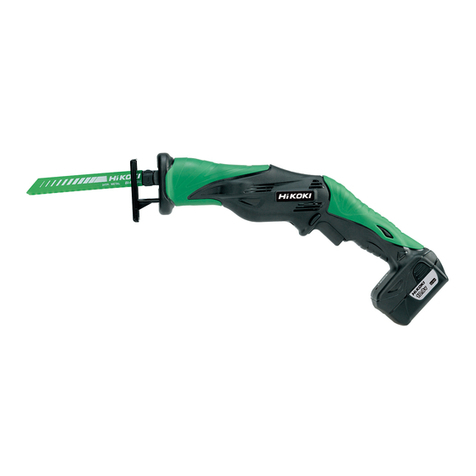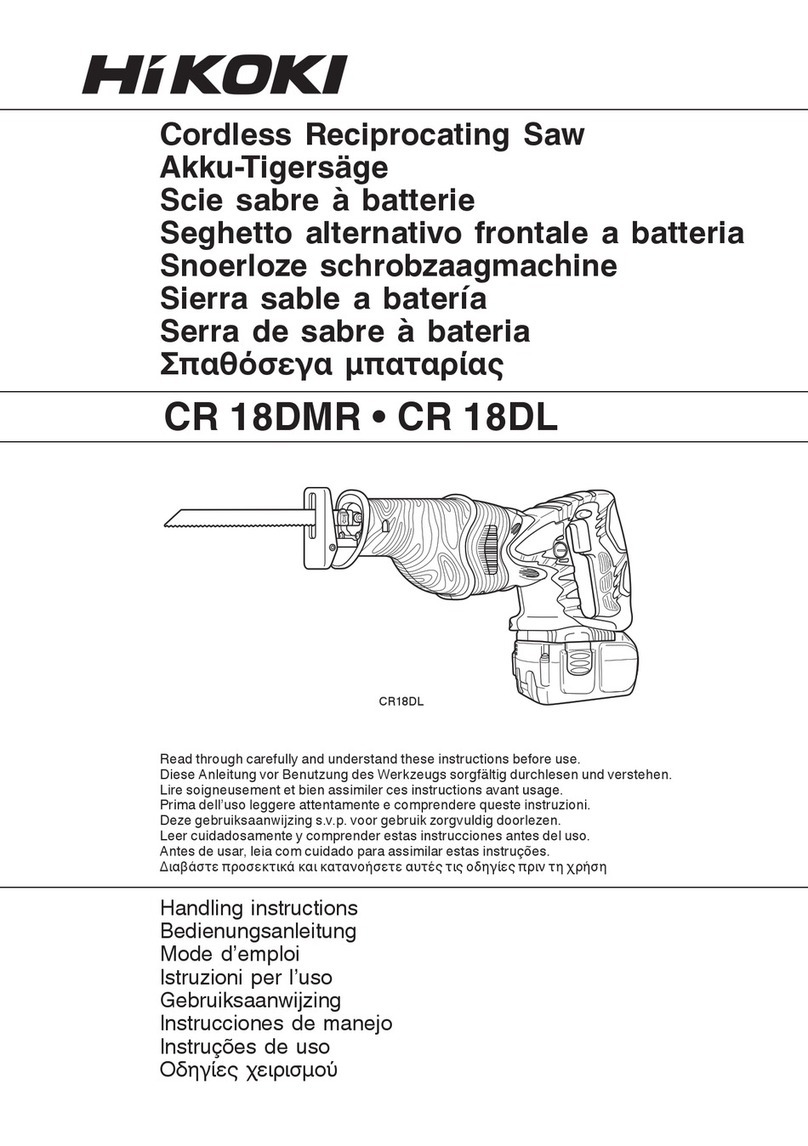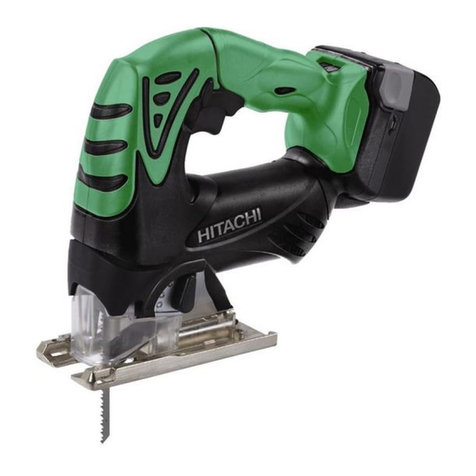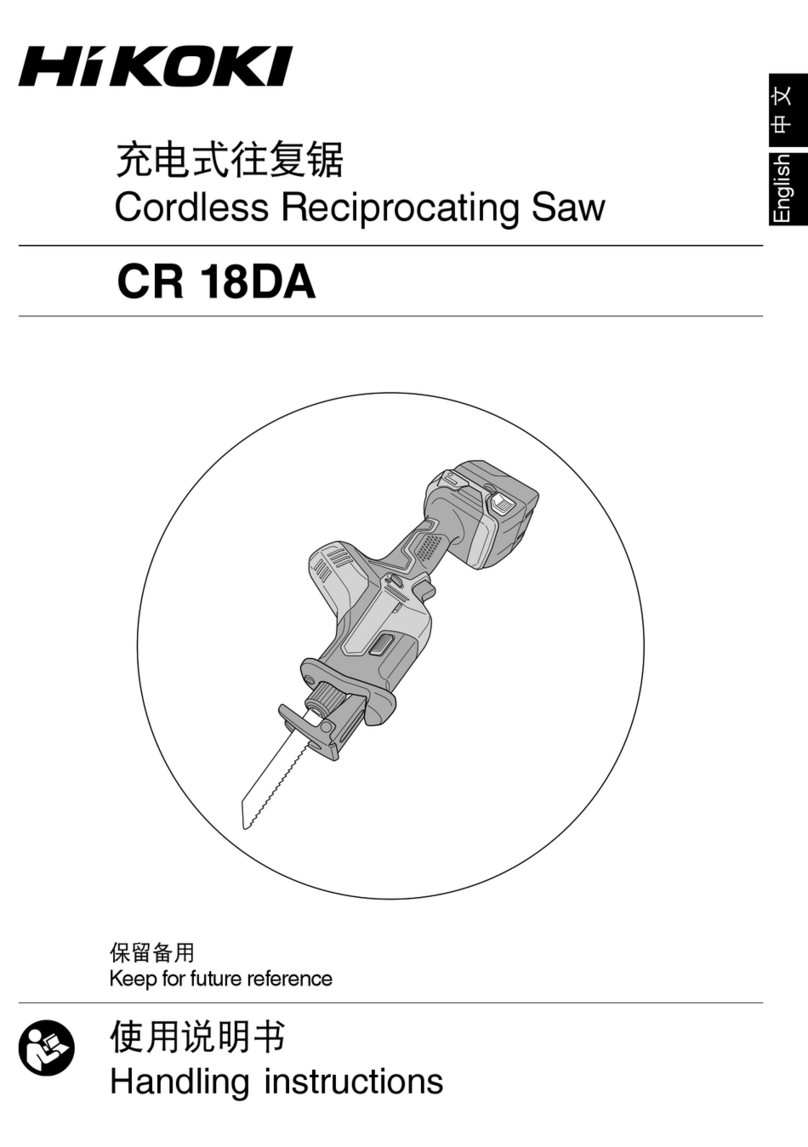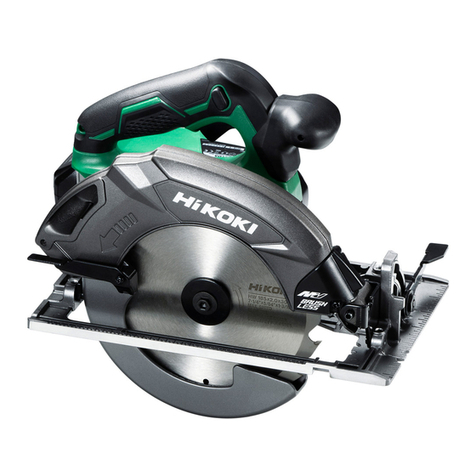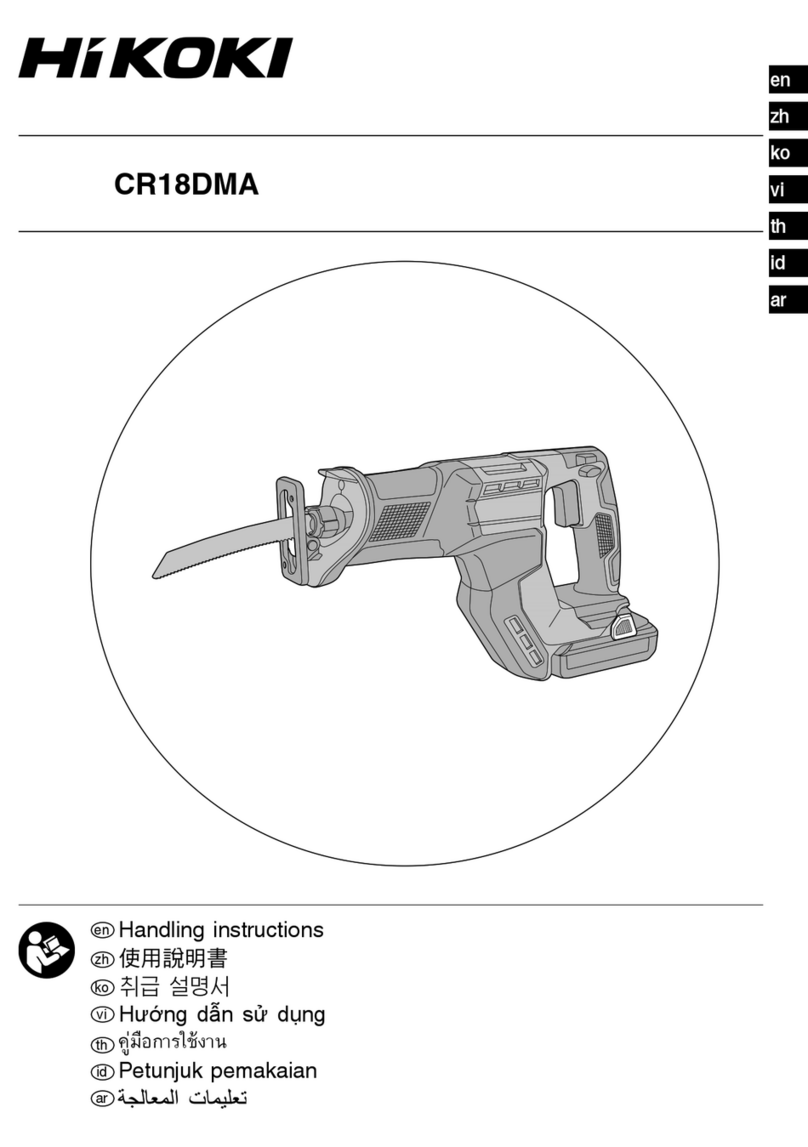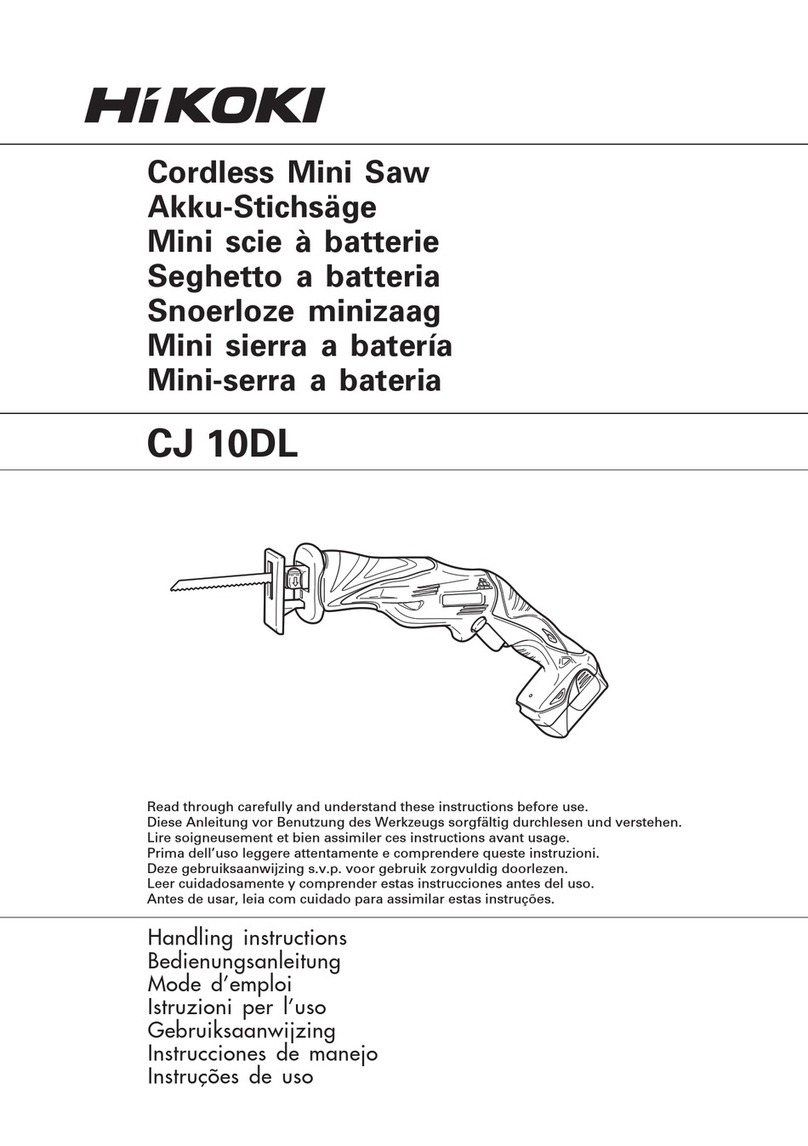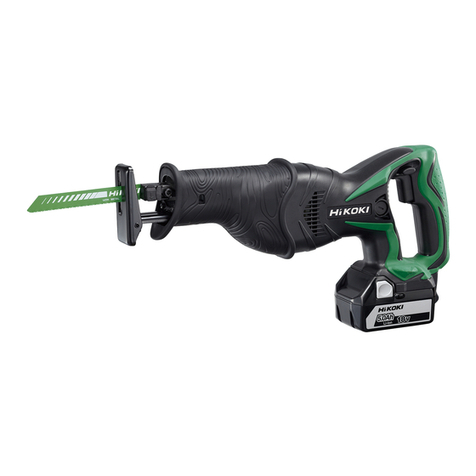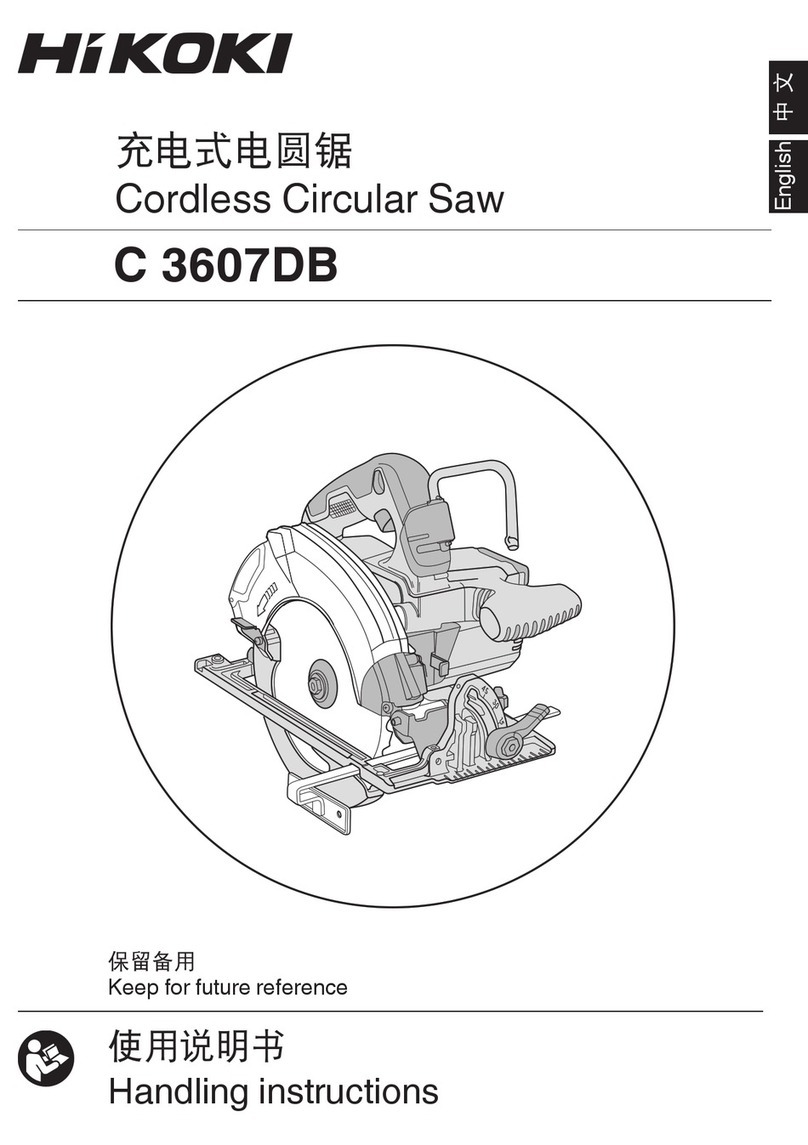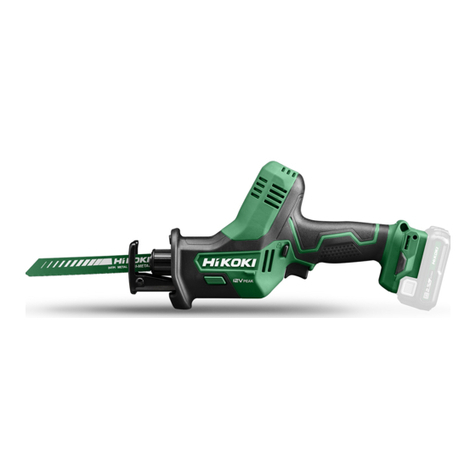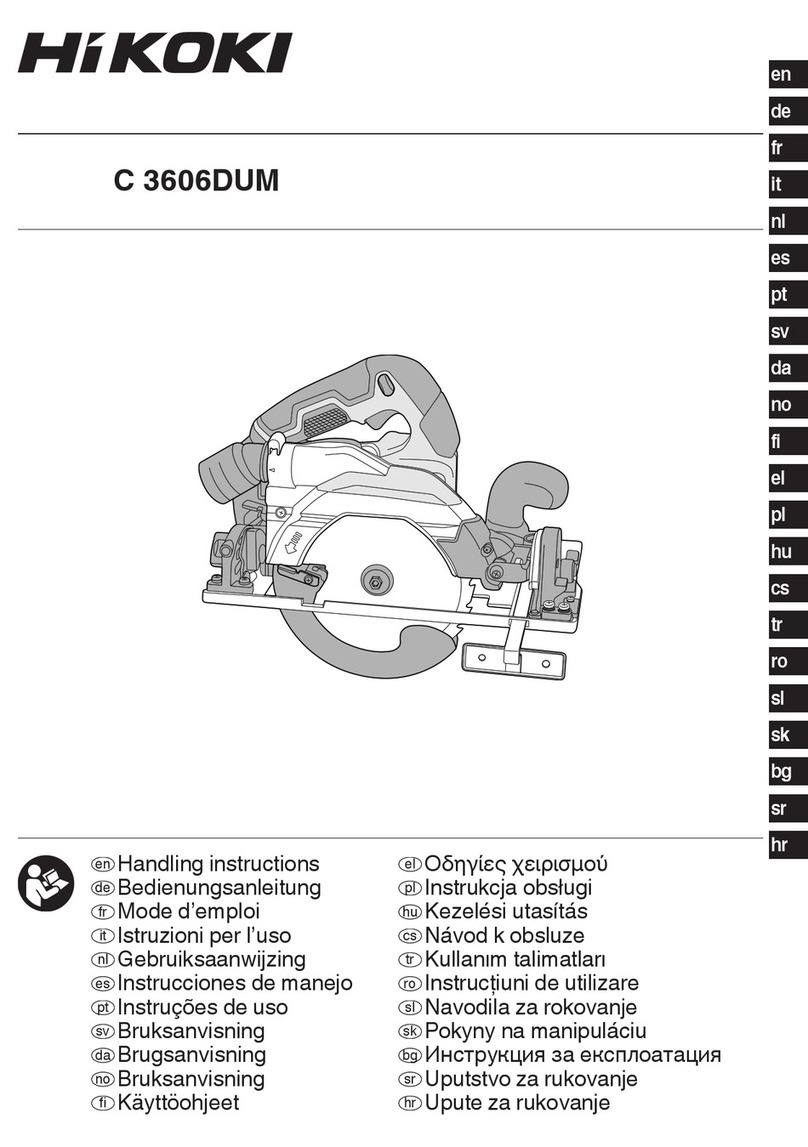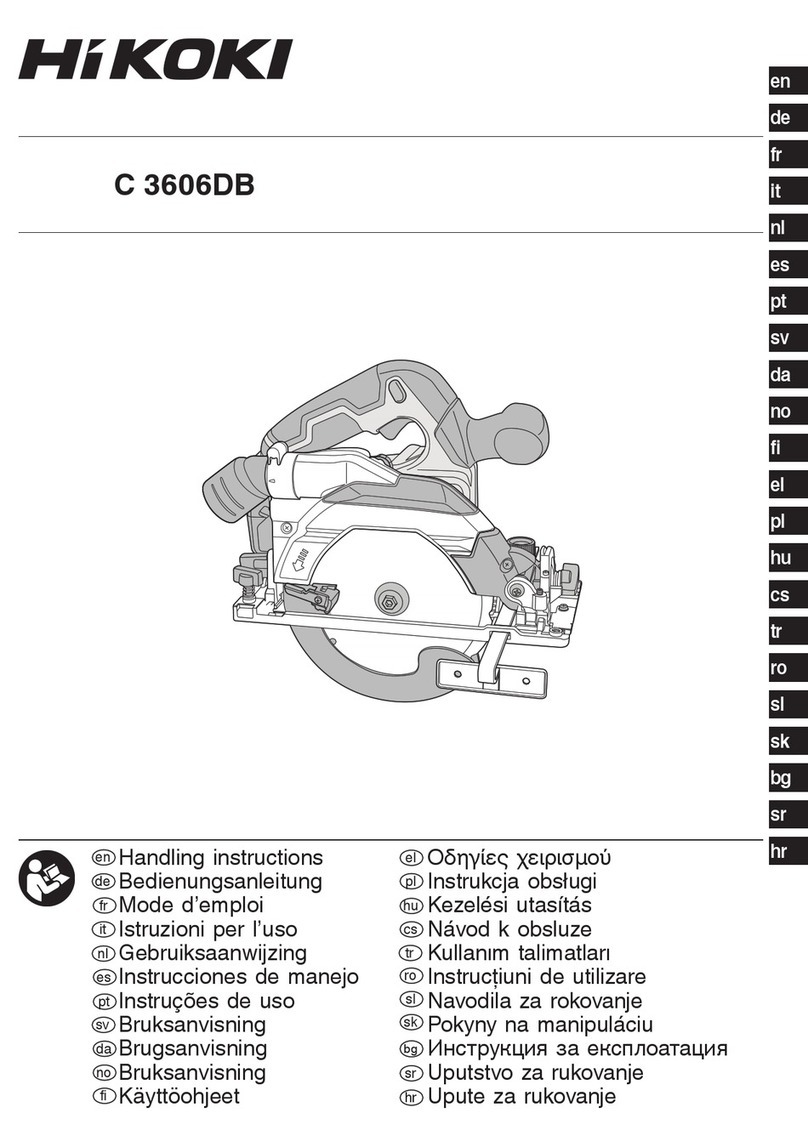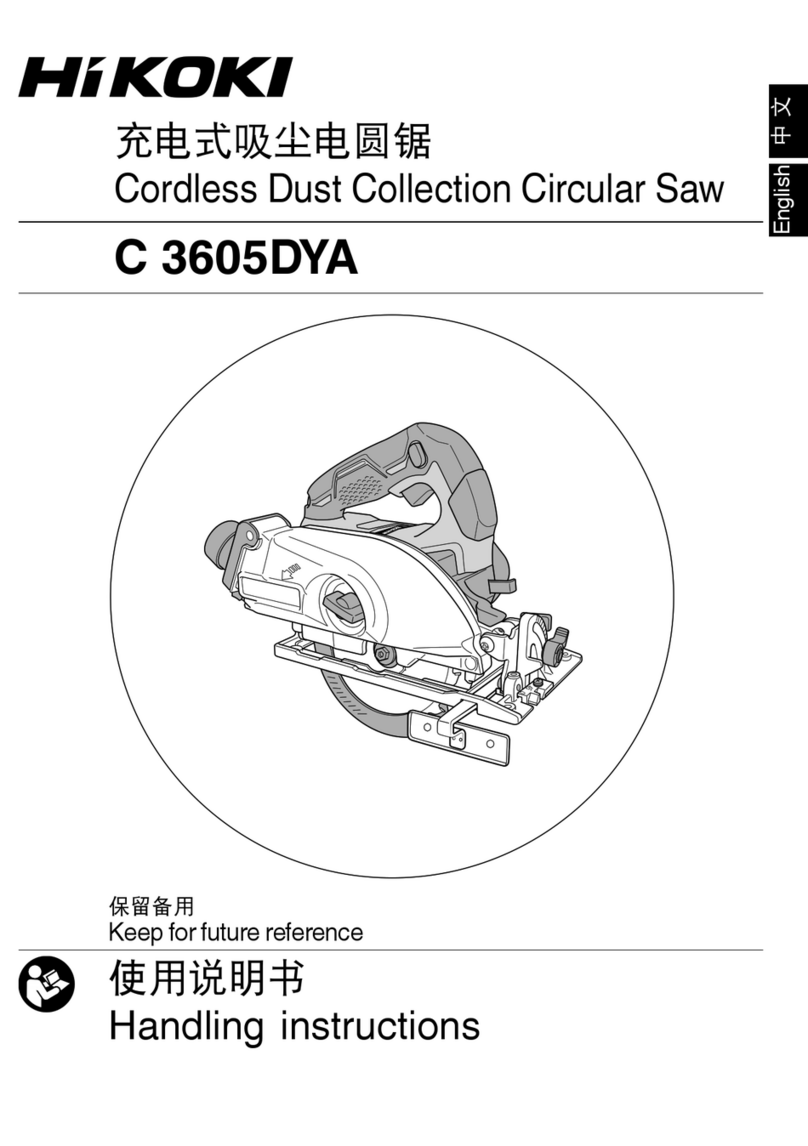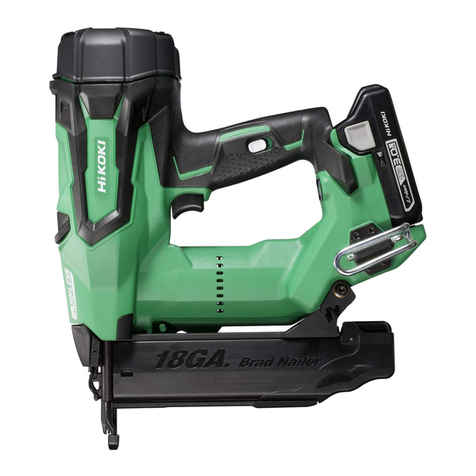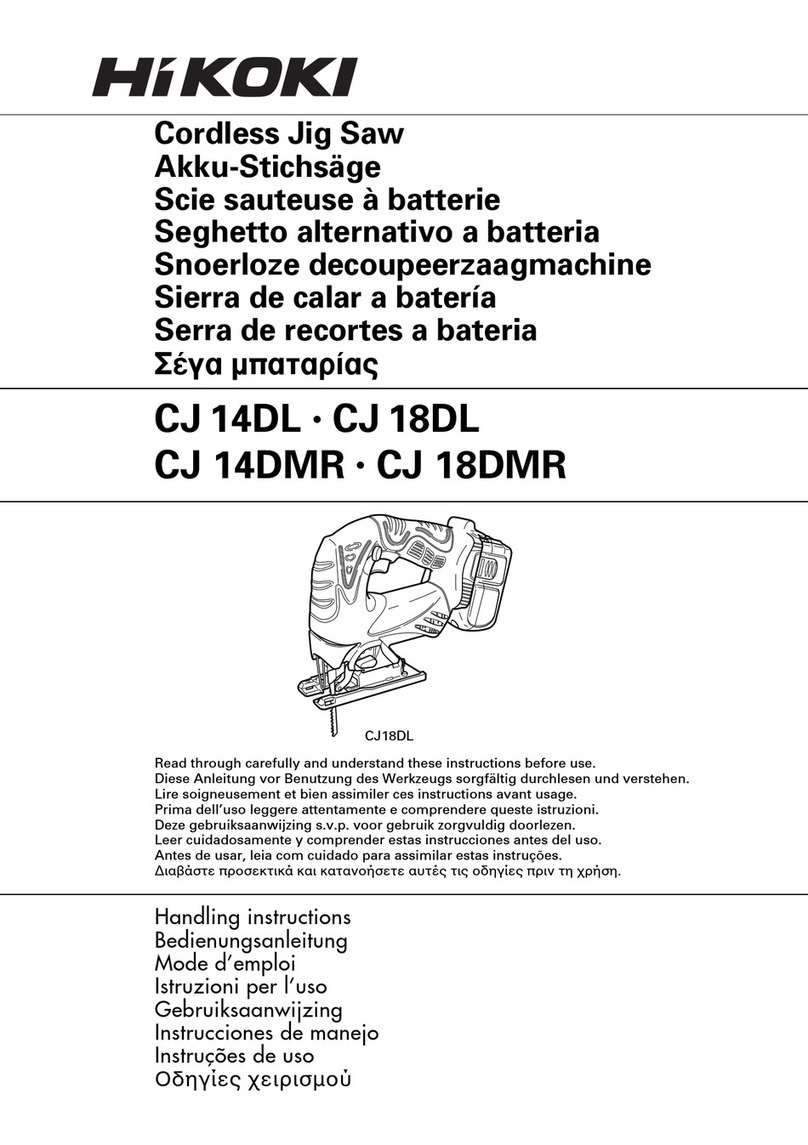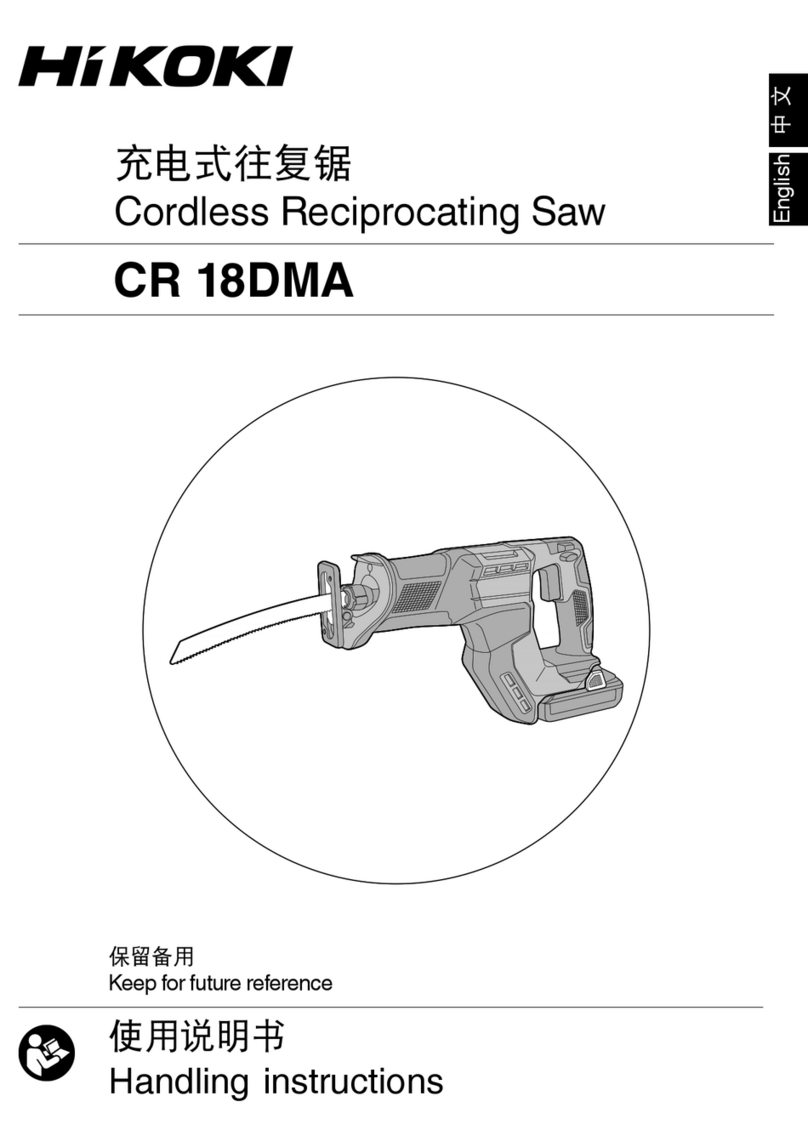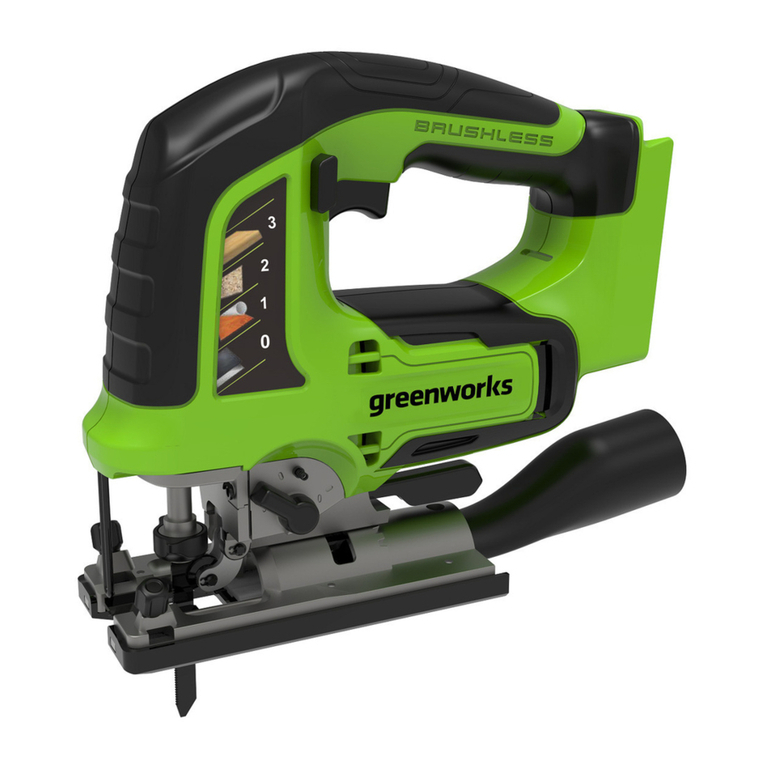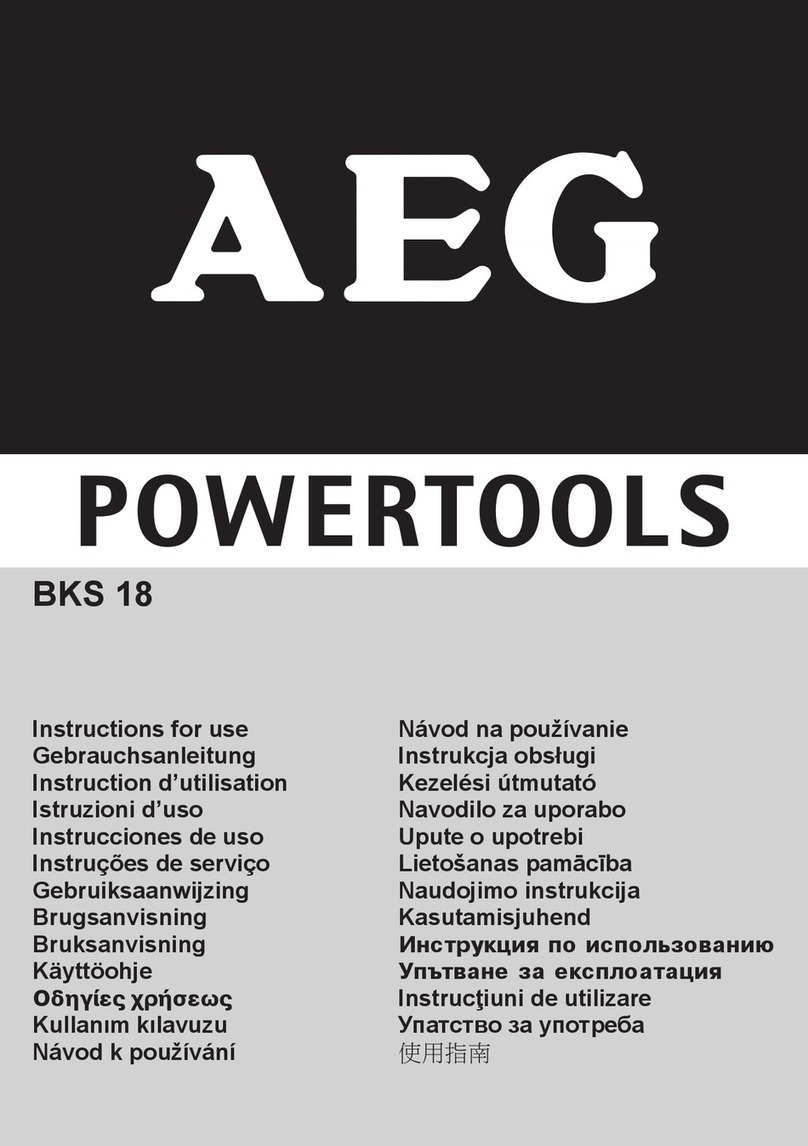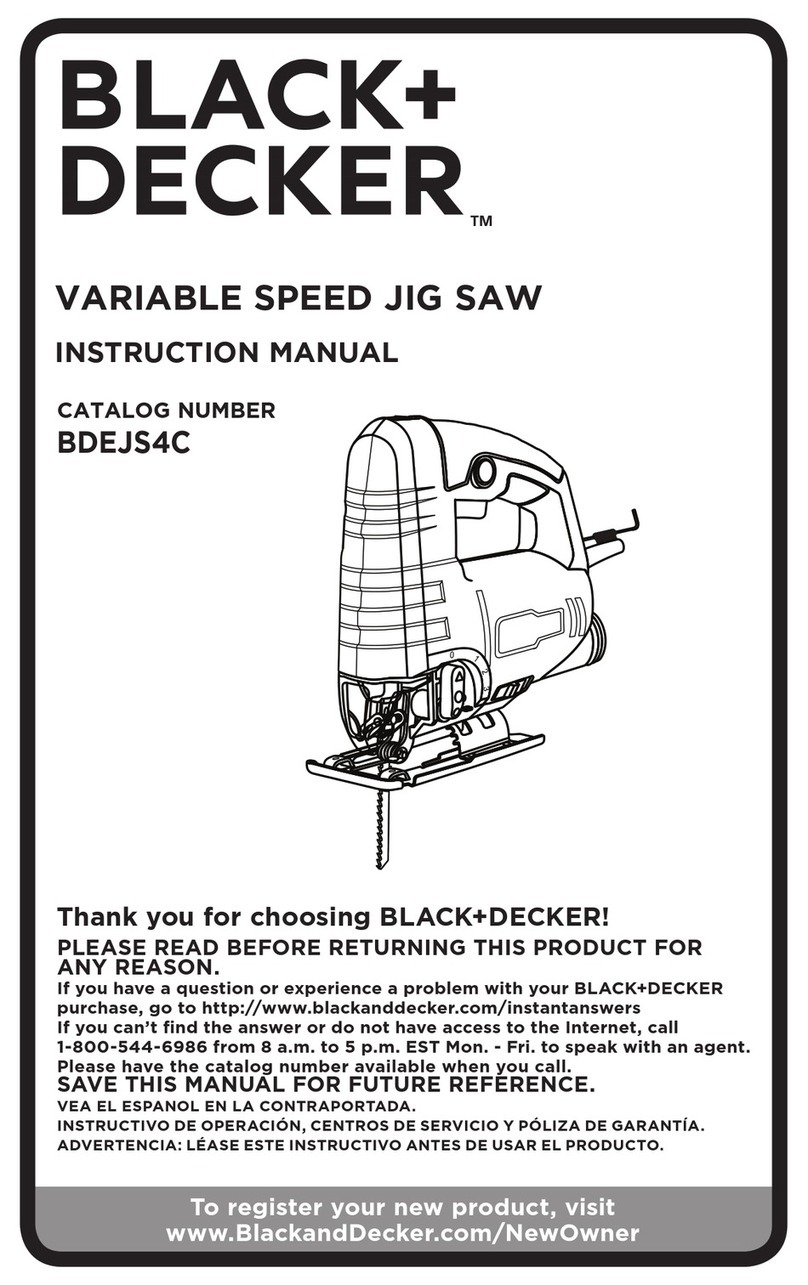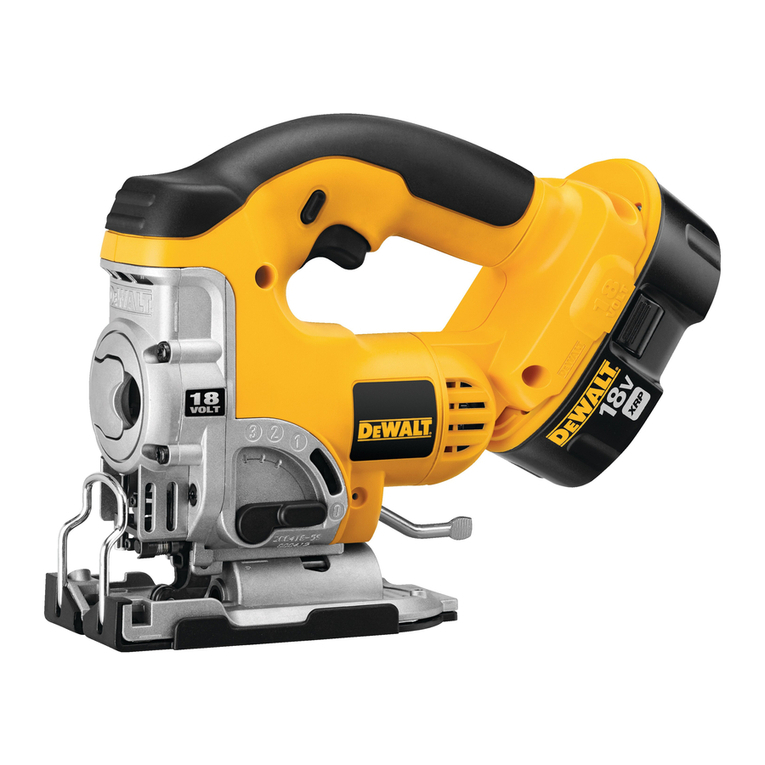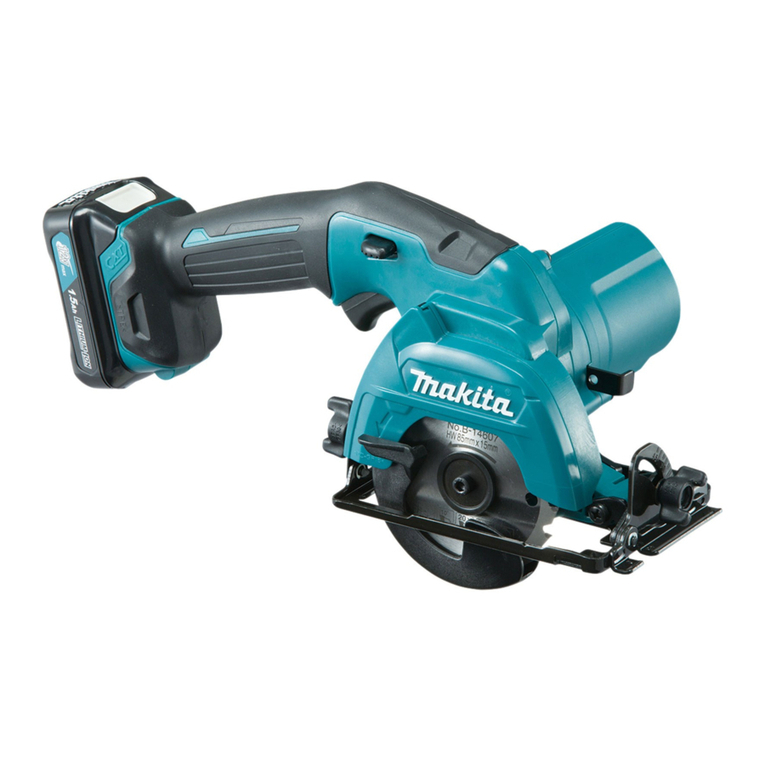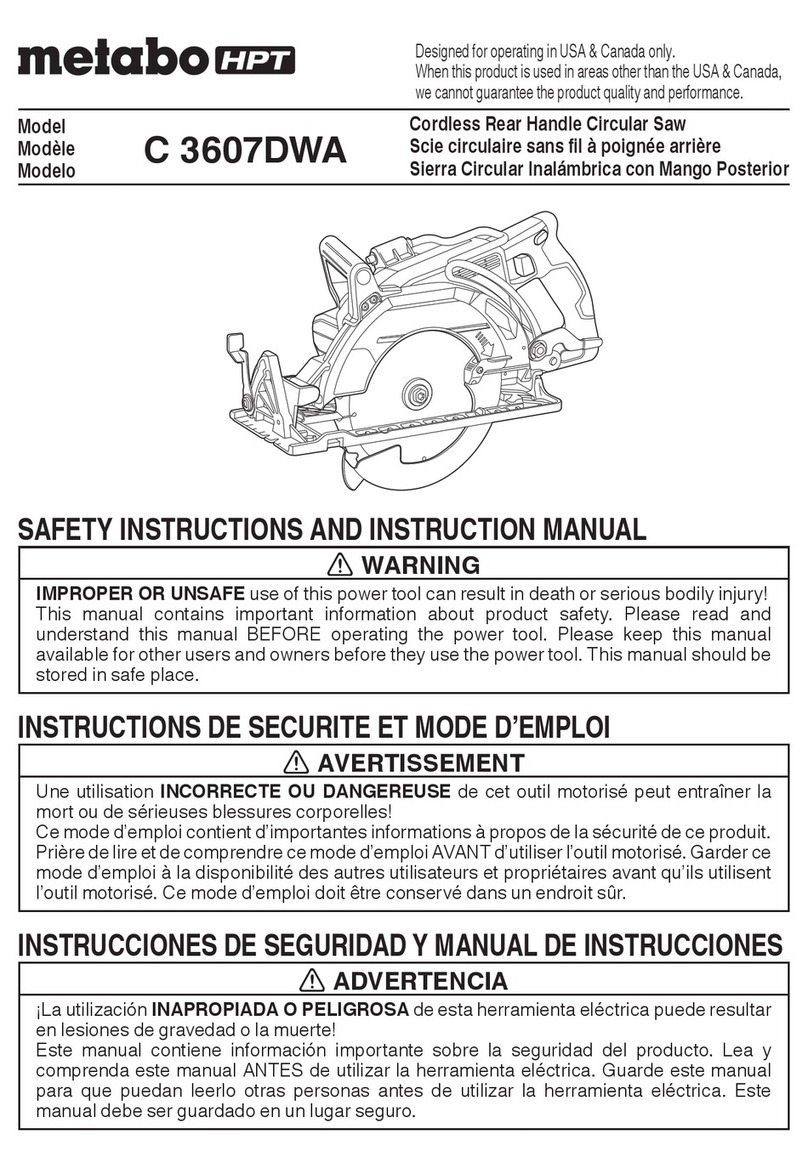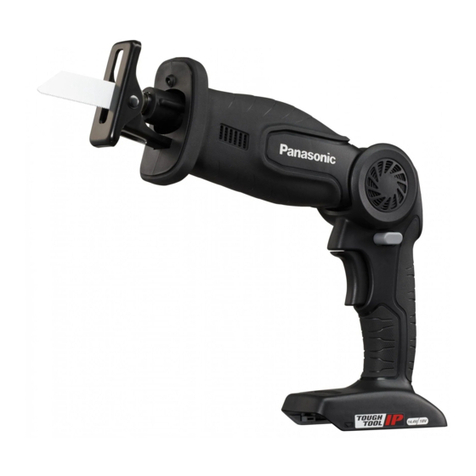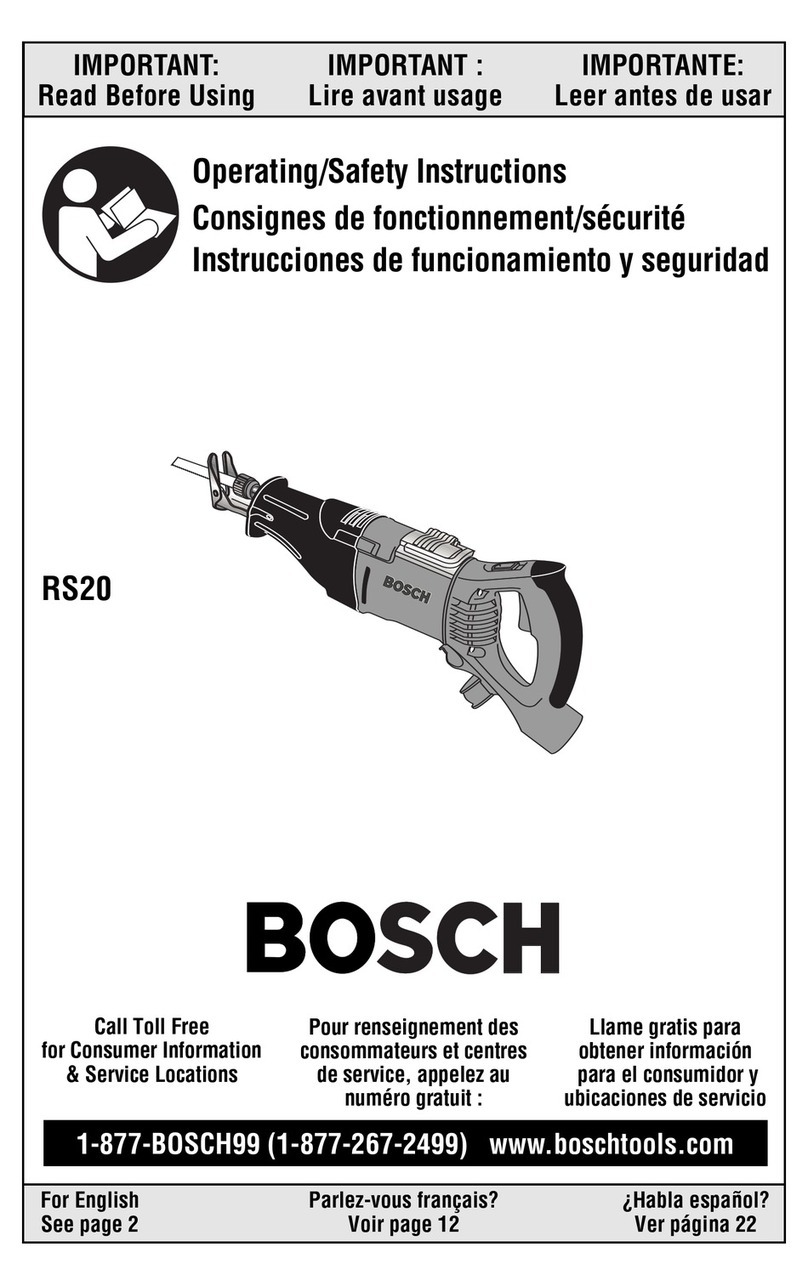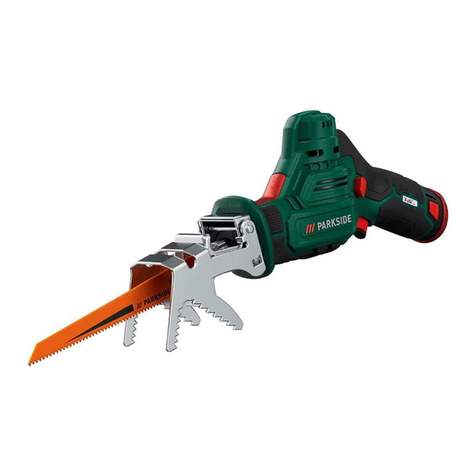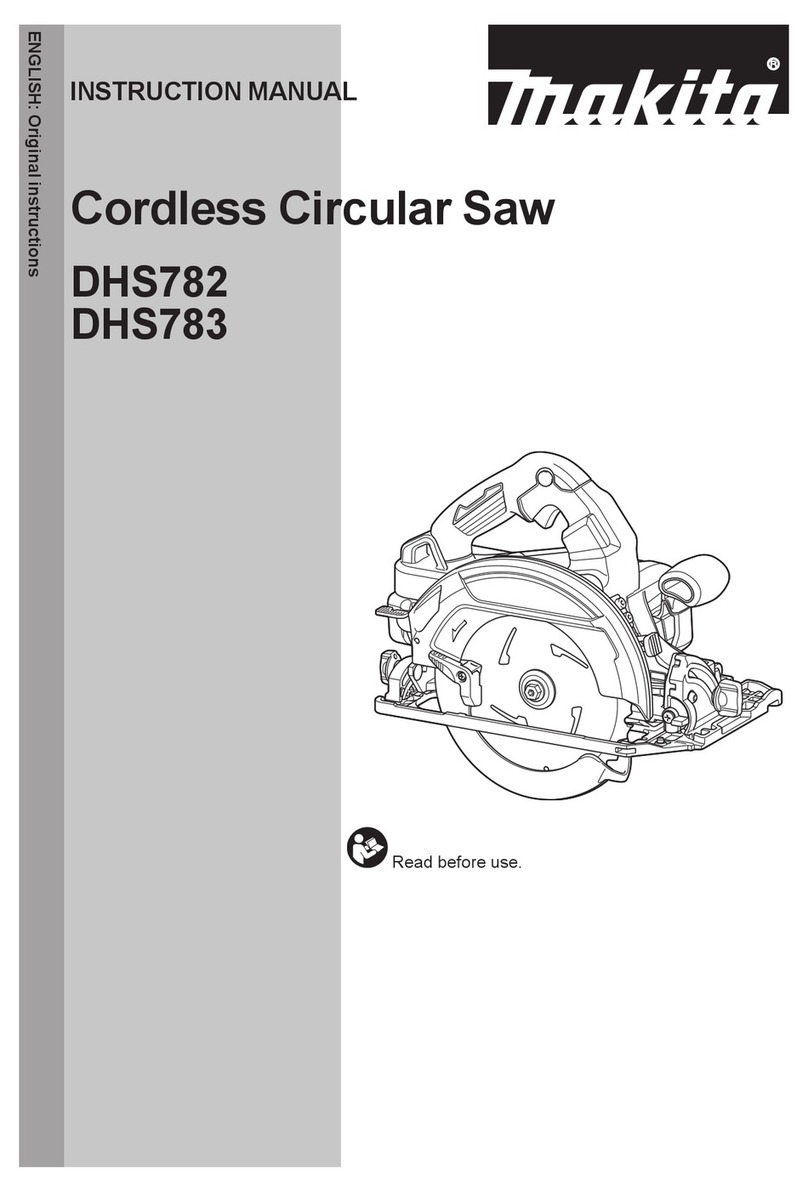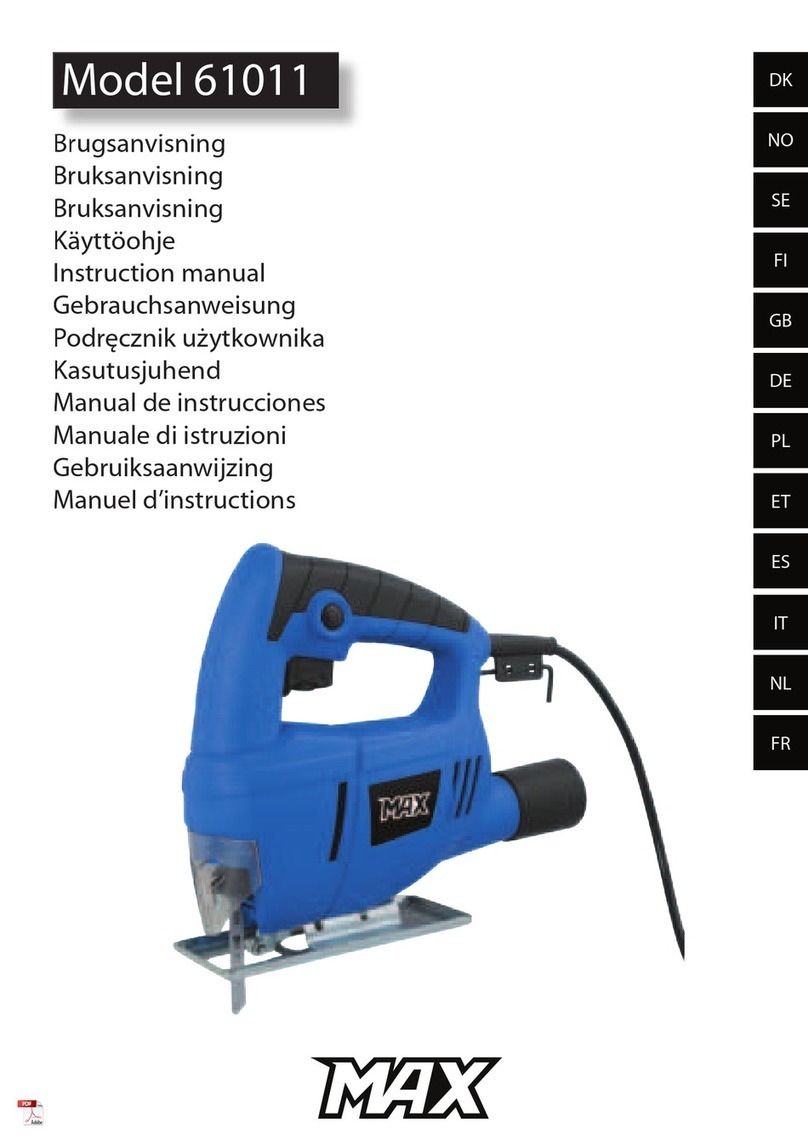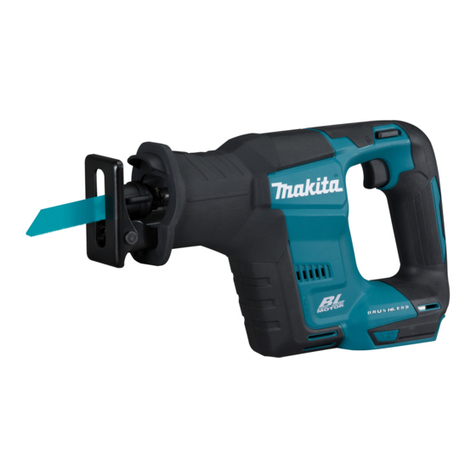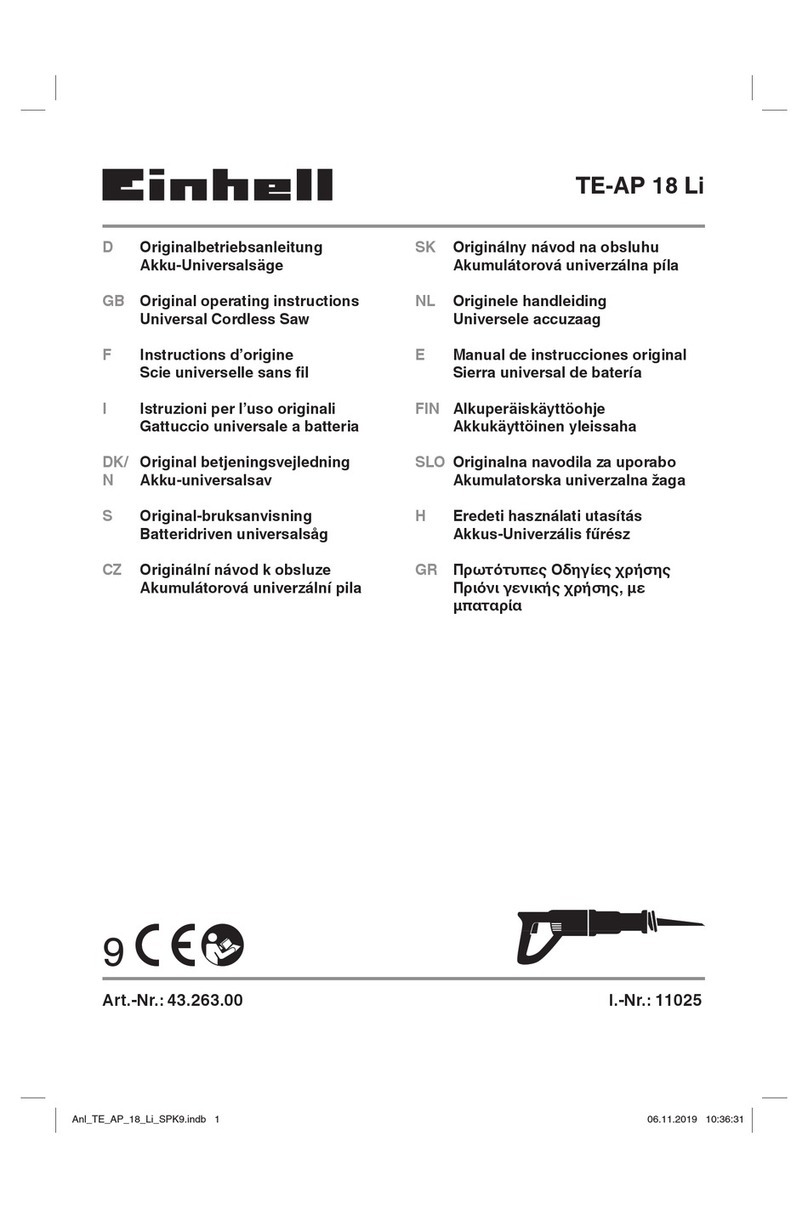
8
English
If you cut a large pipe, large block of wood, etc., that
exceeds the cutting capacity of a blade; there is a risk
that the blade may contact with the inner wall of the pipe,
wood, etc., resulting in damage. (Fig. 8)
17. Never apply any unreasonable force to the saw blade
when cutting. Doing so can easily break the blade.
18. The motor can be locked sometimes, depending
on the combination of the material to be cut and the
blade. Whenever the motor gets locked, switch it off
immediately.
19. Use clamps or another practical way to secure and
support the workpiece to a stable platform. (Fig. 9)
Holding the work by hand or against your body leaves it
unstable and may lead to loss of control.
20. When cutting metallic materials, use an appropriate
cutting fluid (spindle oil, soapy water, etc.) to prolong the
bladeʼs service life.
21. Delay the feed speed when cutting the material into
small circular arcs. An unreasonably fast feed may break
the blade.
22. Plunge cutting
○Avoid plunge cutting for metallic materials. This can
easily damage the blade.
○Never pull the switch trigger while the tip of the saw
blade tip is pressed against the material. If you do so, the
blade can easily be damaged when it collides with the
material.
○Make absolutely sure that you cut slowly while holding
the body firmly. If you apply any unreasonable force to
the saw blade during the cutting operation, the blade can
easily be damaged.
23. Keep the light ON during cutting operation only. If
it is lit ON in other cases, the main body switch can
be inadvertently turned ON, resulting in unexpected
accidents.
24. Do not expose directly your eye to the light by looking
into the light.
If your eye is continuously exposed to the light, your eye
will be hurt.
25. Never touch moving parts.
Never place your hands, fingers or other body parts near
the tool’s moving parts.
26. Never operate without all guards in place.
Never operate this tool without all guards or safety
features in place and in proper working order. If
maintenance or servicing requires the removal of a
guard or safety feature, be sure to replace the guard or
safety feature before resuming operation of the tool.
27. NEVER leave tool running unattended. Turn power off.
Don’t leave tool until it comes to a complete stop.
28. The power tool is equipped with a temperature
protection circuit to protect the motor. Continuous work
may cause the temperature of the unit to rise, activating
the temperature protection circuit and automatically
stopping operation. If this happens, allow the power tool
to cool before resuming use.
29. Do not give a strong shock to the switch panel or break it.
It may lead to a trouble.
30. Do not use the product if the tool or the battery terminals
(battery mount) are deformed.
Installing the battery could cause a short circuit that
could result in smoke emission or ignition.
31. Keep the tool’s terminals (battery mount) free of swarf
and dust.
○Prior to use, make sure that swarf and dust have not
collected in the area of the terminals.
○During use, try to avoid swarf or dust on the tool from
falling on the battery.
○When suspending operation or after use, do not leave
the tool in an area where it may be exposed to falling
swarf or dust.
Doing so could cause a short circuit that could result in
smoke emission or ignition.
CAUTION ON LITHIUM-ION BATTERY
To extend the lifetime, the lithium-ion battery equips with the
protection function to stop the output.
In the cases of 1 to 3 described below, when using this
product, even if you are pulling the switch, the motor may
stop. This is not the trouble but the result of protection
function.
1. When the battery power remaining runs out, the motor
stops.
In such a case, charge it up immediately.
2. If the tool is overloaded, the motor may stop. In this
case, release the switch of tool and eliminate causes of
overloading. After that, you can use it again.
3. If the battery is overheated under overload work, the
battery power may stop.
In this case, stop using the battery and let the battery
cool. After that, you can use it again.
Furthermore, please heed the following warning and caution.
WARNING
In order to prevent any battery leakage, heat generation,
smoke emission, explosion and ignition beforehand, please
be sure to heed the following precautions.
1. Make sure that swarf and dust do not collect on the
battery.
○During work make sure that swarf and dust do not fall on
the battery.
○Make sure that any swarf and dust falling on the power
tool during work do not collect on the battery.
○Do not store an unused battery in a location exposed to
swarf and dust.
○Before storing a battery, remove any swarf and dust that
may adhere to it and do not store it together with metal
parts (screws, nails, etc.).
2. Do not pierce battery with a sharp object such as a
nail, strike with a hammer, step on, throw or subject the
battery to severe physical shock.
3. Do not use an apparently damaged or deformed battery.
4. Do not use the battery in reverse polarity.
5. Do not connect directly to an electrical outlets or car
cigarette lighter sockets.
6. Do not use the battery for a purpose other than those
specified.
7. If the battery charging fails to complete even when a
specified recharging time has elapsed, immediately stop
further recharging.
8. Do not put or subject the battery to high temperatures or
high pressure such as into a microwave oven, dryer, or
high pressure container.
9. Keep away from fire immediately when leakage or foul
odor are detected.
10. Do not use in a location where strong static electricity
generates.
11. If there is battery leakage, foul odor, heat generated,
discolored or deformed, or in any way appears abnormal
during use, recharging or storage, immediately remove it
from the equipment or battery charger, and stop use.
12. Do not immerse the battery or allow any fluids to flow
inside. Conductive liquid ingress, such as water, can
cause damage resulting in fire or explosion. Store your
battery in a cool, dry place, away from combustible and
flammable items. Corrosive gas atmospheres must be
avoided.
CAUTION
1. If liquid leaking from the battery gets into your eyes,
do not rub your eyes and wash them well with fresh
clean water such as tap water and contact a doctor
immediately.
If left untreated, the liquid may cause eye-problems.
00BookCR18DAAsia.indb800BookCR18DAAsia.indb8 2020/05/2214:35:422020/05/2214:35:42
